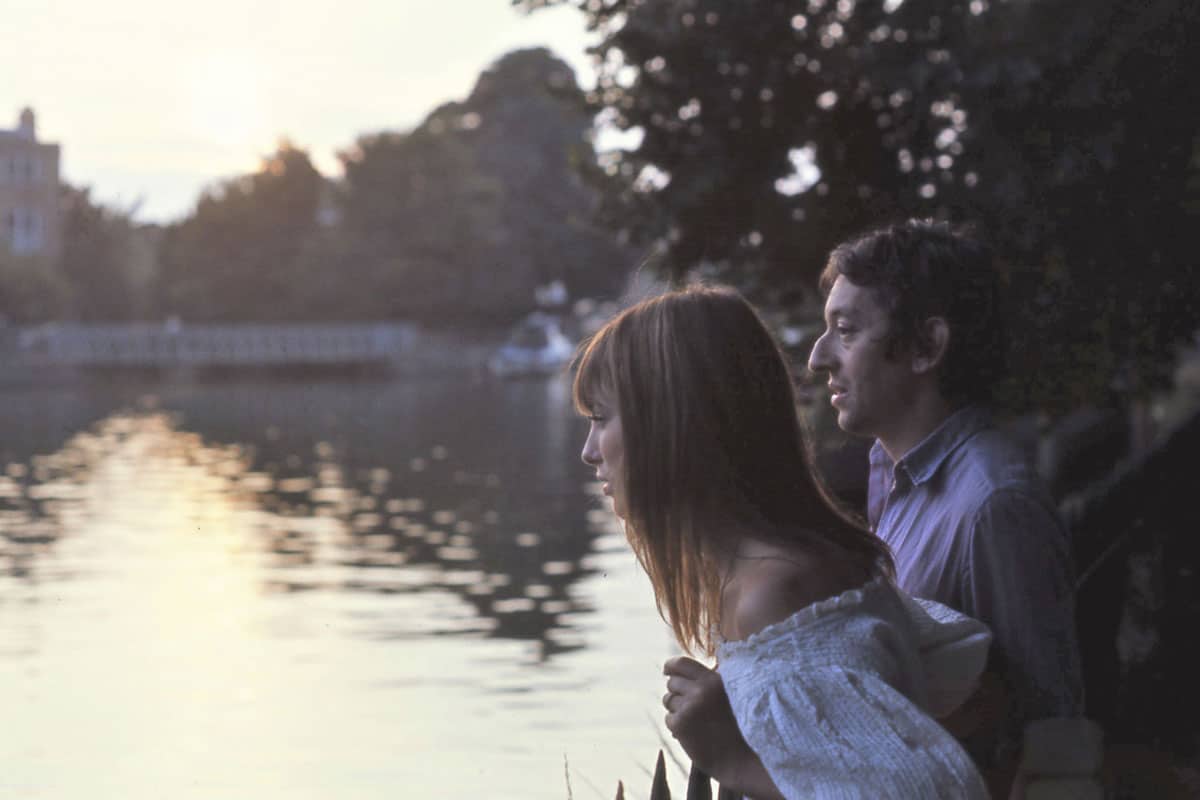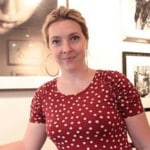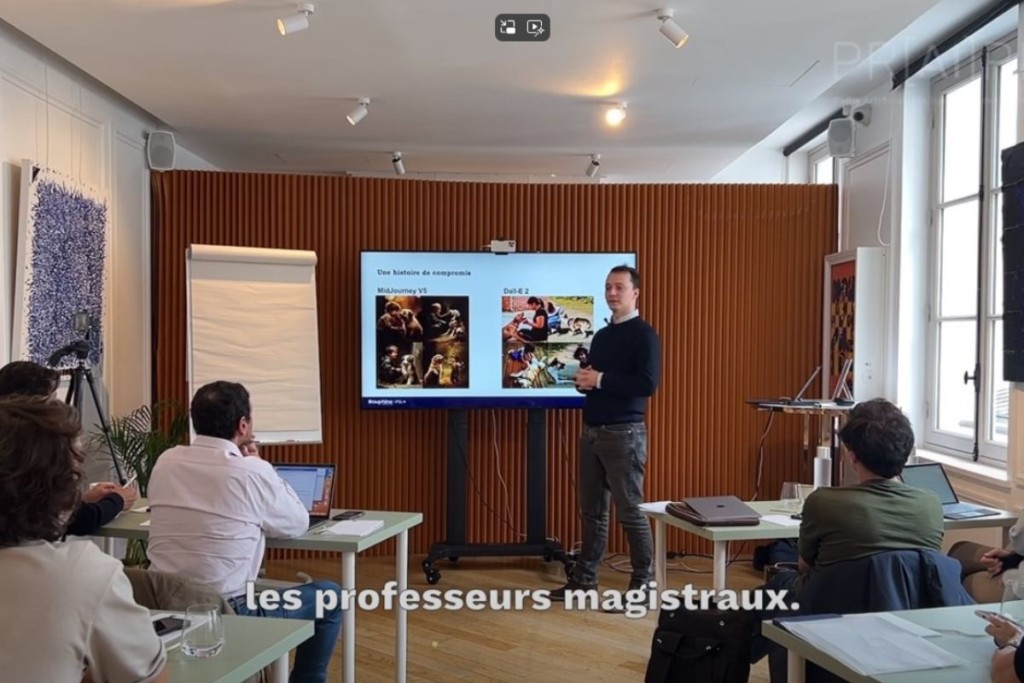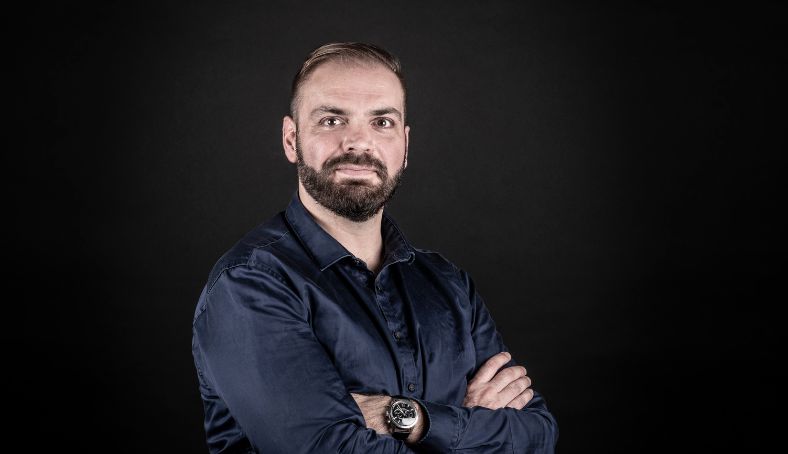
The disappearance of Jane Birkin, on July 16, intensified the phenomenon: not a day, in fact, without scrolling on our telephone screens, one of these "vintage" photos with powerful glamor to the glory of legends of the last century. Met a few days before the disappearance of the French icon, the young founder of the Galerie de l'instant, an expert in photography of celebrities from the 60s to the 80s, evokes the authenticity of these vintage shots that fascinate us.
Julia Gragnon founded one of the most unique and endearing galleries in the Paris of photography. Opened in 2008 in the Marais, now also located in Nice, the Galerie de l'Instant has become one of the essential addresses for those who love beautiful images of celebrities. Not just anyone is displayed on its walls, as shown by the current exhibition, "Catherine Deneuve: right bank, left bank", open until 1er October (also at the Hotel Lutetia).
For almost 20 years, at 46 rue de Poitou, Julie Gragnon, a talent scout, has been revealing the photography she loves: that of the great photographers of the last century and the legendary series that contributed, from the 60s to the 80s, to the birth of our favorite legends, from Steve McQueen to the Rolling Stones, from Romy Schneider to Madonna. Fascinated at a very young age by the beauty of bodies (a prima ballerina mother) and by the magic of the lens (a photographer father at Paris Match), the one who definitely embodies a certain idea of photography, always on the lookout for rare shots, most often vintage, always evoking a destiny, welcomes us into her lair to discuss the profession she exercises, old-fashioned, with passion.
More on the gallery lagaleriedelinstant.com
Serge Gainsbourg and Jane Birkin, Oxford, 1969 (©ANDREW BIRKIN – LA GALERIE DE L'INSTANT)
In the era of all-powerful social networks, what should we think of the reflection of the philosopher Walter Benjamin who says in essence: “The possibility of mass reproduction of images causes them to lose their original force, their “aura””?
-
The advent of social networks is obviously a phenomenon that has contributed to the trivialization and overuse of photography. But I also strongly believe in the virtues of information and education. The eye needs to be educated, and that's why I like to meet visitors to my gallery, in order to explain, for example, what is the difference between a photo shown on a smartphone screen and a photo print. This mass reproduction also has the advantage of democratizing photography, of making it accessible. Social networks have helped me get in touch with many artists! For example, our exhibition on Frida Kahlo was only possible because one day I posted a photograph of her by Lucienne Bloch on Instagram, tagging it. This is how his granddaughter contacted me and the idea of an exhibition was born. An extraordinary coincidence. And it's not the only time. Networks have an impact on the profession of gallery owner. When I post a vintage photo on the gallery's account, it happens that the next day it is already sold! My goal has never been to sell… Most of the photos I exhibit are not on the gallery's website. The approach of the visitor and his interest are essential. At the heart of my job, there is sharing.
This fascination for these photographs of celebrities from the 60s and 70s, what does it say about our time?
-
Take, for example, this vintage shot of Romy Schneider by Giancarlo Botti, where she appears naked lying down. One of my favorite images. Nobody sponsored, or even organized, this series, with agent, make-up artist, assistant, etc… No! It was Romy herself who asked the photographer to do this series of nudes. That says it all about a more innocent, simpler, more natural relationship to the image… That's also the magic of the Rolling Stones photos by Dominique Tarlé, in the Villa Nellcote, in 1971! The story of a photographer passionate about music who knows a little about the Stones, drops by to say hello to them and finally, instead of staying a day, will spend six months by their side, becoming the only witness in the world of their life at this time. era. Today this would no longer be possible, because there are too many intermediaries. Behind every cliché there is a well-crafted contract and a strategy. The spontaneity of this time can no longer happen, but naturalness, simplicity, and even candor, that's all we love... Yet another example: the last photo shoot that Marilyn Monroe did in 1962 with the photographer fashion designer Bert Stern. Everything is planned and organized for this fashion shoot for Vogue magazine to be a success. But in front of Bert Stern's lens, that day, Marilyn decides to undress... No one is forcing her... At this precise moment, something instinctive happens between the artist and the photographer who could no longer happen nowadays. And that's what fascinates, from the oldest to the youngest, from insiders to amateurs.
Behind each exhibition hides a host of anecdotes. Which ones remain engraved?
-
Of course the very first exhibition of the gallery: that of the photos of my photographer father at Paris Match. He had immortalized the biggest stars, Alfred Hitchcock, Marlene Dietrich, Steve McQueen, but he spoke very little about them. He had the modesty of the grown-ups. This exhibition imposed itself on me the day I discovered its negatives in the archives of Match. Then, in 2008, there was Dominique Tarlé's first exhibition with his photos of the Stones, Led Zeppelin, the Who… I hadn't anticipated at all, at the time, the madness that these figures and themes would generate with the public. And as the gallery has a small area, the public was queuing outside to see the exhibition… Also, the one on Romy, with this famous image of her naked by Giancarlo Botti. Since I was 15 I dreamed of finding this photo. One day I decide to call the photo agency that represents Botti, Gamma, and I am told that the latter is dead and that they do not have the rights. I resign myself to giving up. And, then, by chance, I came across a six-page article on this Romy series in the VSD magazine, with an interview with the still living photographer! I went up the track, found the negative of this famous photo, and set up an exhibition around it. There would also be a lot to say about the Steve McQueen exhibition and that of Frida Kahlo which took place during the Covid crisis… Finally the reward is to see people happy!
“That's all that interests me in the profession of gallery owner: the “backstage”, the organisation! ”
What makes an exhibition appeal to you?
-
Luck, meetings… The one, for example, with the son of Kate Barry who is one of my favorite photographers. I really dream of exhibiting it. His son came the day of the opening of the exhibition of Andrew Birkin (Jane's brother) last winter… So the exhibition will end up happening! I always look forward to the moment when I will finally dive into the archives, reviewing all the negatives. That's all that interests me in the job of gallery owner: the “backstage”, the organization! Having your nose in the archives, taking your time to select the photos that will make the exhibition, doing the print tests in the laboratory, seizing them as if these photos and the fleeting moment they immortalize belonged to me... The same jubilant feeling is played out during the hanging. This is my moment for me, before the exhibition is delivered to the public.
Why do you exhibit contemporary photography so little?
-
I have nothing against ! But I can tell you this anecdote… In 2008, so at the beginning of the gallery's history, I went to Arles for the Rencontres. This year remains an unforgettable edition of the festival! Among the exceptional exhibitions to see, there was that of the South African photographer Pieter Hugo, whom I discovered then. He was showing his series of hyenas. Introduced by a member of the Rencontres team, I ended up meeting him and offering him an exhibition at my place. I didn't know that Peter Hugo was already a star and that he was already working with lots of galleries! His answer was clear: “I only work with contemporary art galleries”. I understand, in his response, moreover very kind, that being exhibited, on the contrary, by a photography gallery would make him lose a zero on the sale price of his photos and all that goes with it. Less prestige, less space, etc… There I raised one of the faults of this trade. I am delighted to be able to sell expensive photos! But that mentality, that's all I don't have. It's a coldness and a cynicism that I hate. Contemporary photography is part of this spirit, and for me it is a defect.
You have just returned from the Meetings. Your favorites from this edition?
-
“Diane Arbus: Constellation” is not strictly speaking part of the “Rencontres de la photographie”, since it takes place at the Luma Foundation, but this exhibition is brilliant. I loved the bias of the hanging that leaves a feeling of clutter. No order, no date, no theme. We take 450 photos in the face fixed on metal bars, and it's a real emotion. This modern scenography excites me! I like to experience an exhibition in this way, to roam freely, without guiding thread.
"Saul Leiter: Assemblages" at the Archbishop's Palace. I only knew the “cliché” of him…. His color photos, the streets of New York… I discovered, here, black and white, images drawn by him, intimate photos, nudes, painted photos… A delight. Also, I did not know him physically, I had preconceived ideas. A documentary film shows the exact opposite of this narrow figure that I imagined.
“Portraits – The Florence and Damien Bachelot collection” at the Réattu Museum. This collection has been constituted for about twenty years. You can see a hundred works there… Magical. A collection unveils the soul of the collector. And this exhibition makes you want to find out who is behind it. And then this museum is so beautiful!
Similar items
- All
- Visual arts & Art de vivre
- Film & Audiovisual
- Edition
- Video games
- Fashion & Design
- Music & Performing Arts





